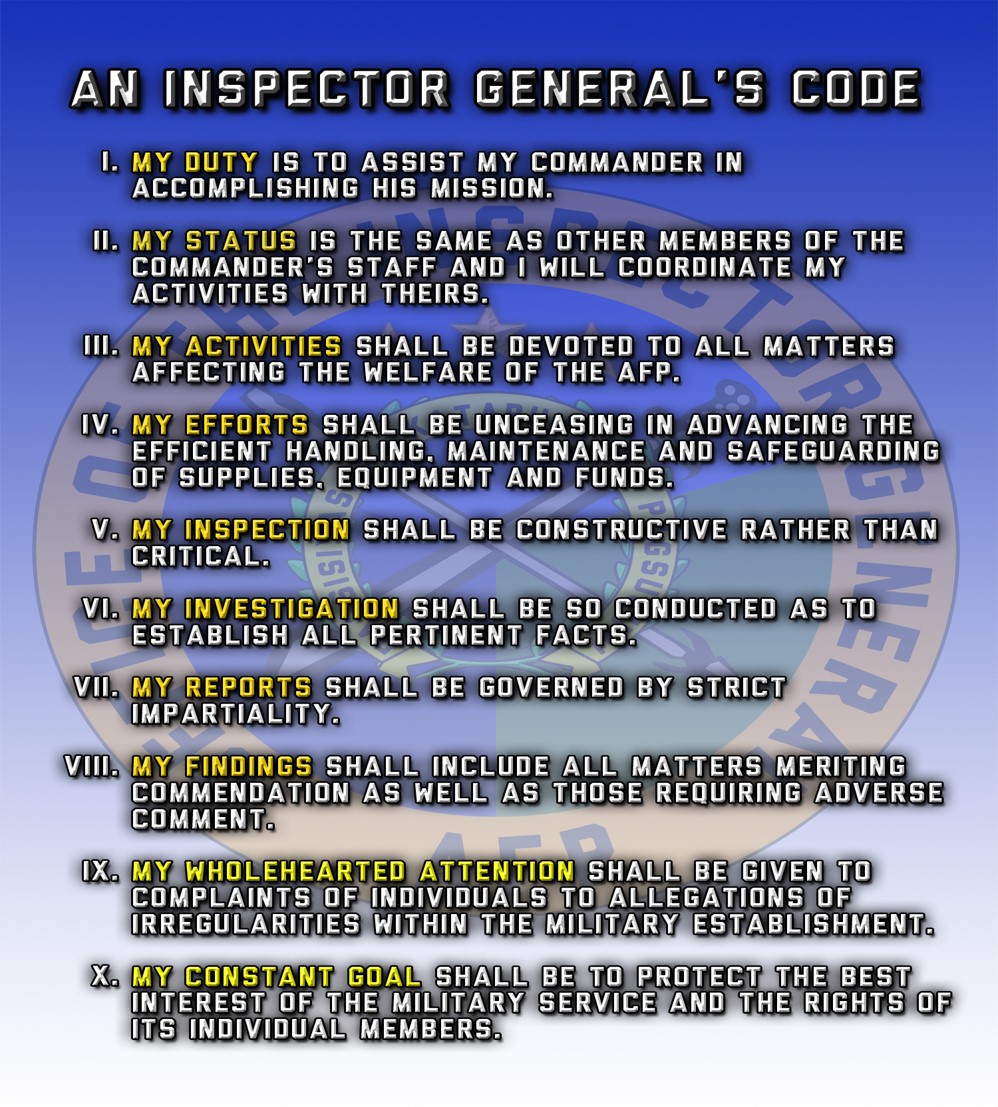MANDATE
HISTORICAL BACKGROUND
The creation of the Inspector General Service (IGS) (as part of the Philippine Army) was mandated by Commonwealth Act Nr 1 (National Defense Act) dated 21 December 1935. Inspection became a primary function of commanders upon establishment and activation of Army camps and training cadres. The National Defense Act states that “The Inspector General Service shall be charged under such regulations as the Chief of Staff may prescribe, the making of such inspections, investigations and reports as may be prescribed in regulations or directed by the Chief of Staff.” read more...
THE IGS INSIGNIA
The IGS insignia consists of three (3) distinct elements, namely: a spear, a bolo, and a wreath of Sampaguita leaves

SPEAR
The native spear stands for authority and power. In earlier times, the spear signified the power and authority of the chief of the barangay over his subjects.
BOLO
1) The bolo represents the Filipino virtues of industry and labor. It is a valuable tool in the economic life of the Filipino, as well as a weapon for defense.
2) The placement of the spear and the bolo, both pointed downward, signifies that the IGS is exercising its authority, power, industry and other virtues solely for the defense of the right to freedom. The blade of the bolo that faces up serves to portray that the accomplishment of IGS tasks are focusing on the swift (no red tape or undue delay), yet humane dispensation of justice.
WREATH OF SAMPAGUITA LEAVES
1) Such a wreath links the spear and the bolo and its choice as an element of the IGS insignia serves to include the trait of nationalism that is conveyed by the Sampaguita,the country’s national flower. Moreover, the Sampaguitarepresents purity, honesty, and integrity, as well as exceptional Filipino cultural and intellectual achievement.
2) The Filipino inscriptions – Pagsisiyasat(Inspection), Katarungan(Justice) and Pagsusuri (Investigation) serve to constantly remind all Inspectors’ General Service personnel that justice and objectivity must always characterize the performance of their inspection and investigation functions.
IGS HISTORY

ARTICLES OF WAR
THE INSPECTOR GENERAL'S CODE


RELATED LINKS







